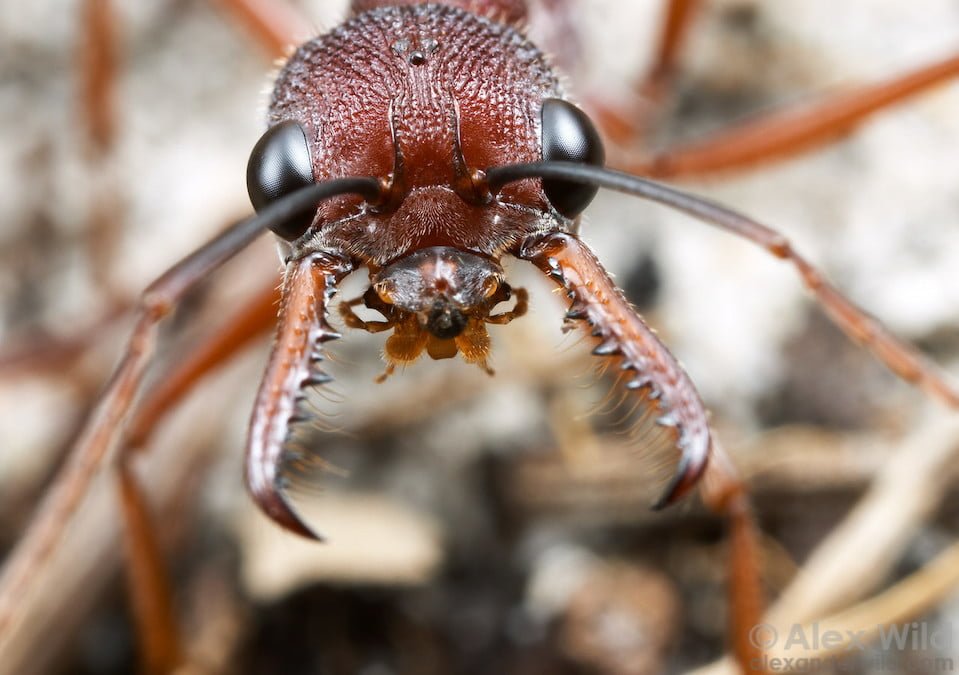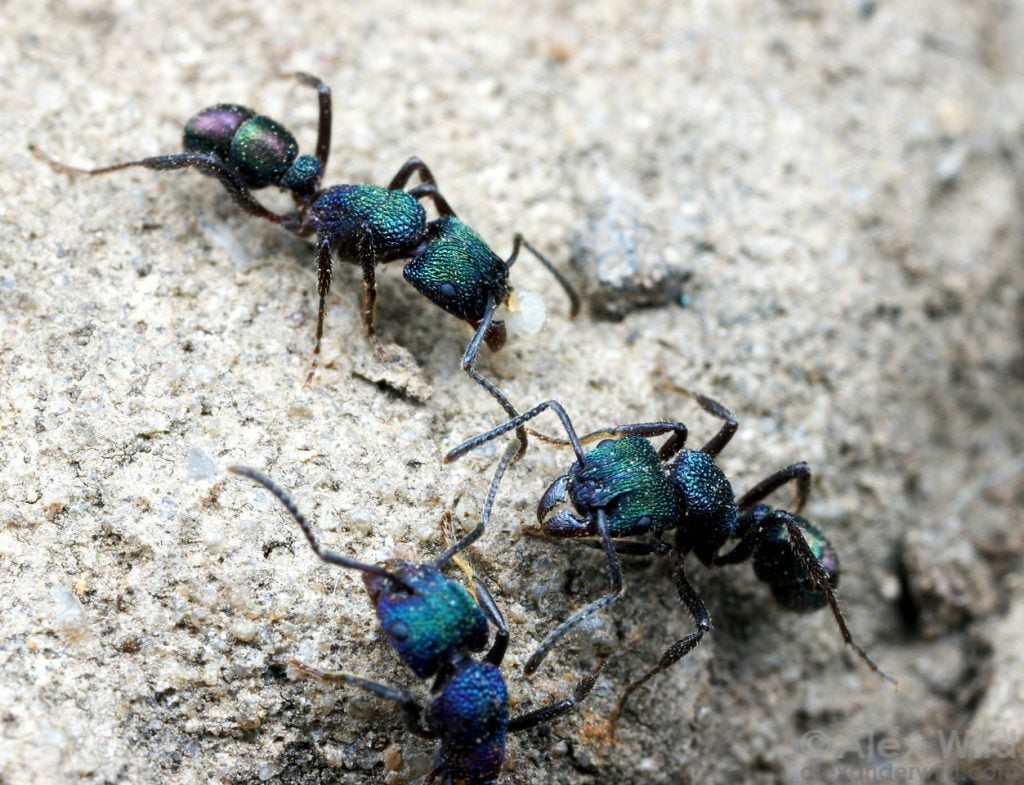Hello, and welcome to another ant article. Normally, being a Monday, I would provide an update to my current colonies. However, there has been little activity to report. Therefore, I have decided to write an article instead. This article is about the ants of Australia. I hope you find it informative.
Disclaimer: I do not know very much about the ant species of Australia. My studies tend to be restricted to those found in the UK. I do have a book entitled Australian Ants: Their Biology and Identification. It was written by Steve. O. Shattuck and published in 1999 by CSIRO. Therefore, I have taken the information that follows from that publication. I will do my best to check for any updates on Australian species of ant from the Internet. Photographs of ants appearing on this page belong to Alex Wild.
Steve Shattuck reported, in 1999, that there were 103 known genera of ants on the Australian mainland. This amounted to 10 subfamilies and 1275 species/sub-species. He goes on to say that the number of discovered species and sub-species may increase two-fold. He also stated that Australia (as of 1999) had representatives of two-thirds of the world’s ant subfamilies. This includes one-third of its genera and, about 15% of its species. That is an impressive number of ant species. Some species of ant are in Australia, but not found anywhere else in the world.
However, since his 1999 publication, the number of ant genera in Australia has indeed increased and now stands at 12. This is due not only to the discovery of more but also the reclassification of some genera.
Diversity
A reason that Australia has such a diverse representation of ant species, is because of the diversity of its regions. Australia has some extremely dry, hot areas such as deserts, and some very wet, humid places, such as rain forests. The north of Australia being warmer and drier than the south. As I understand it, much of central Australia is uninhabited “outback”.
Despite Australia being a large country, much of its ant distribution seems to occur around the “edges” of the country. The most ant-populated region is the east coast of Queensland and New South Wales (66, or more, genera). The eastern coast of Australia as a whole and down to the south-eastern regions also have high genera numbers. Adelaide appears to have between 41-50 ant genera.
Subfamilies of the Ants of Australia
As of 2019, the 12 subfamilies of ants found in Australian are as follows:
Proceratiinae.
Amblyoponinae .
Dorylinae.
Ponerinae.
Heteroponerinae.
Ectatomminae.
Myrmeciinae.
Formicinae.
Pseudomyrmecina.
Leptanilliae.
Dolichoderinae.
Myrmicinae.
You can find a key to the identification of the Australian ant sub-families here.
Obviously, I cannot describe all the species of ant found in Australia. However, I thought I would highlight two that I find particularly interesting.
Myrmecia/Nothomyrmecia (subfamily Myrmeciinae)
A large species of ant found in Australia, with the smallest specimen being 8mm in length. There are 90 species and sub-species in 2 genera; Myrmecia and Nothomyrmecia. Both genera are similar in form and cannot be mistaken for any other of the ants of Australia. Myrmecia has long straight mandibles, large eyes and is often brightly coloured. Nothomyrmecia is a pale-yellow colour. Nothomyrmecia used to be in a separate sub-family (Nothomyrmeciinae) but is now reclassed into the Myrmeciinae sub-family. There are only one species of Nothomyrmecia in Australia (N. macrops).
Myrmecia have easily recognisable mandibles. They are long, straight and stick out in front of the ant’s head like sabres. The mandibles have teeth along the entire length of the inner margin. The mandibles of Nothomyrmecia, although straight, are not as sabre-like as those of Myrmecia.
Bulldogs
Myrmecia is often known as; Bull ant, Bulldog ant, and Jack Jumper. They are an aggressive ant (hence the name “Bulldog”) and will ferociously defend their nests. Some species of this genus of Australian ants can also jump, giving rise to the name “Jack Jumpers”. They have well-developed eyesight and a powerful sting.
Myrmecia forages on the ground and among low vegetation. It prefers to do so during the day, though some will also forage at night. They feed on insects, arthropods, as well as nectar and other plant exudates. Most of the species in this sub-family nest directly in the soil of the ground. However, some nest in rotten logs. One species nests in epiphytic ferns (epiphytic meaning a plant that grows on trees). The colonies are usually quite small, with only a few hundred members. But some are known to reach numbers in the low thousands.
Ergatoid queens
The queens of Myrmecia tend to be large and winged. However, there are some species in which the queens are ergatoid (meaning they are wingless and worker-like in appearance).
Myrmecia is most abundant in the south of Australia.

Rhytidoponera
For this genus of Australian ants, I will describe the species R. metallica.
This species of ant is common throughout the whole of Australia. Rhytidoponera is known as the Green Ant, Green-Headed Ant, or the Metallic Pony Ant. Rhytidoponera is a striking metallic green colour. It can also range in colour from purple to reddish-violet. They tend to be 5-7mm in length.
R. metallica can be found in a wide variety of habitats, including urban areas, such as yards, parks, and gardens. They feed on a wide range of foodstuffs, from honeydew to insects and arthropods. Some species will also gather seeds. Those in hot arid regions forage during the evening or at night when it’s cooler. Whereas those in more temperate regions will forage throughout the day. They tend to forage individually or in small numbers.
Rhytidoponera nest in the ground, either in the open, such as mounds, or under rocks or other objects. The mounds can vary in size, the larger decorated with small stones, small twigs, or leaves. Species in the forests of northern Australia may nest off the ground, in the trees.
The smaller species of this genus of Australian ants have a potent sting. The larger species have either a weak sting or do not sting at all.
No queens
One of the most fascinating facts about this species of Australian ants is that many lack queens. Instead, their workers can mate with males and produce workers and queens, as well as males. If a fertilised queen is present, fertilised workers often replace them when they die.

I hope you found this article about the ants of Australia interesting. As always, if you spot any spelling and/or grammar errors, please let me know. Likewise, if you believe I have stated an incorrect fact. You can either comment on this article or contact me via the CONTACT page. Also, let me know of your suggestions for future articles. You may also make comments about the subject of Australian ants here. If you live in Australia, I would be intrested in hearing from you about the ants you have seen, or even kept, there. You will know far more than I about the ants there. Thank you.